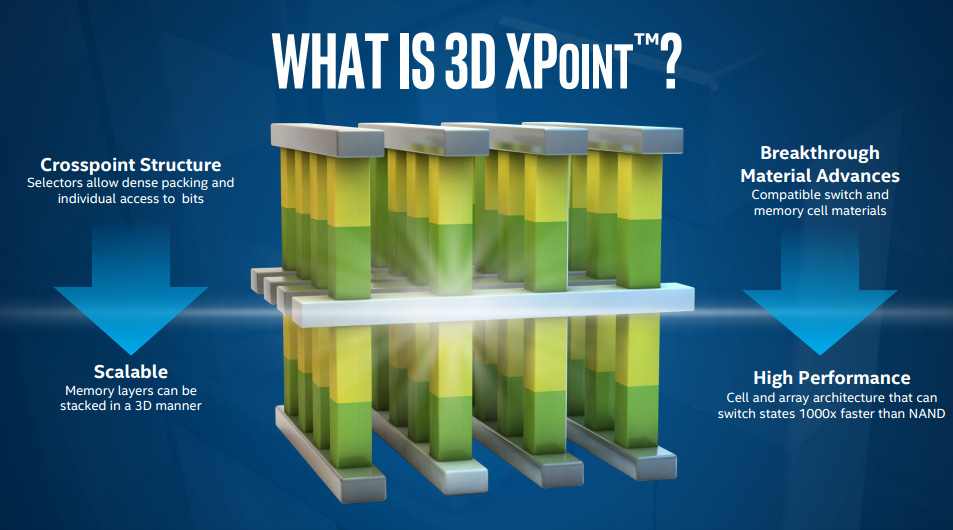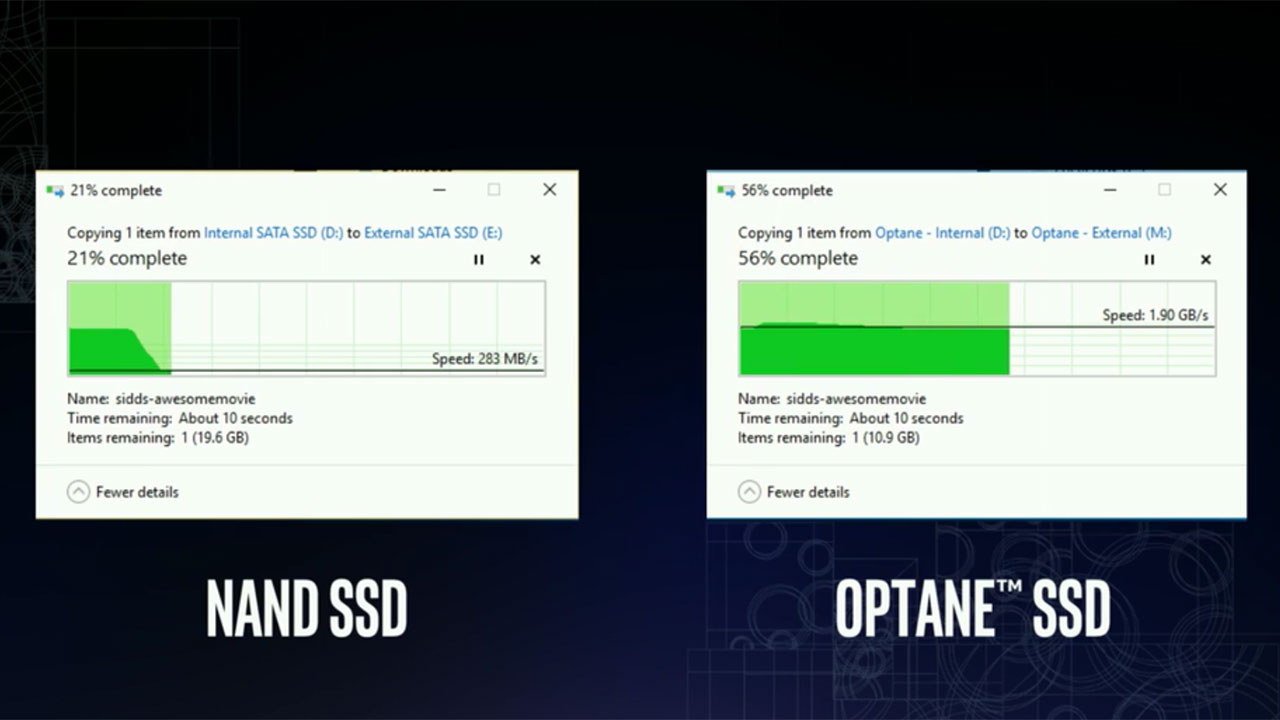Intel's crazy fast 3D XPoint Optane file copy test approaches 2GB/s

Storage was once considered the bottleneck of PC performance, and for many, it still is. However, there have been some impressive speed gains in storage, particularly with the recent proliferation of NVMe-based SSDs, but it's Intel's 3D XPoint Technology (pronounced "cross point") that could bust things wide open.
Intel performed a demonstration of its fancy pants storage technology at IDF 2016 in Shenzhen, China, using their new Optane SSD. The demo consisted of two test systems tasked with copying a 25GB video file from an external Thunderbolt enclosure to an internal SSD.
The first system uses SSDs with NAND flash to transfer the file, in both the Thunderbolt enclosure as well as inside the PC. The second otherwise "identical" system uses prototype Optane SSDs instead. The copy process only required 15 seconds to transfer the 25GB file on the Optane system, reaching nearly 2GB/s. The NAND-based solution on the other hand took about a minute, transferring data more quickly at the start before settling in at around 284MB/s. Unfortunately, there are several problems with the demo.

First, it's not clear what configuration the NAND drives are using; the copy window shows the drive lables as "Internal SATA SSD" and "External SATA SSD", and based on performance it looks like a RAID0 SATA setup on both ends. Except, the NAND starts out fast (over 1.5GB/s) for a few seconds before dropping to 284MB/s, which suggests the use of drives with rather poor sustained write performance, perhaps TLC drives.
Another potential bottleneck is the Thunderbolt interface; Intel didn't state whether it was TB2 or TB3, but while TB2 in theory would top out at around 2.5GB/s (20Gbps), previous real-world testing has typically been limited to 1.3GB/s or lower (using RAID0 SSDs). Overhead on TB3 may limit performance, or the TB3 enclosure may be the bottleneck. Note that Intel demonstrated a prototype Optane SSD at IDF 2015 doing 464K IOPS with random data (which is 1.9GB/s), so 2GB/s in sequential transfers a year later feels a bit tame.
Regardless, this is an unfair comparison since we've already seen substantially faster NAND drives, including Intel's own SSD 750 series. We've seen the SSD 750 hit 1.3GB/s in our own evaluation, while more recently Samsung's 512GB 950 Pro hit nearly 1.5GB/s in sustained write performance.
But the Optane SSD is clearly fast, and Intel is enthused about Xpoint. It called the technology, which it developed jointly with Micron, "biggest single advancement in memory in over 20 years." It's not just about speed, either. Intel says 3D XPoint brings about cost and capacity improvements. Intel is likely holding off showing additional performance details until products are closer to launch, which is currently slated for Q4 of this year.
Keep up to date with the most important stories and the best deals, as picked by the PC Gamer team.
You can watch Intel's keynote at IDF 2016 here. The 3D XPoint discussion and demonstration starts around the 50:40 mark.
Paul has been playing PC games and raking his knuckles on computer hardware since the Commodore 64. He does not have any tattoos, but thinks it would be cool to get one that reads LOAD"*",8,1. In his off time, he rides motorcycles and wrestles alligators (only one of those is true).


